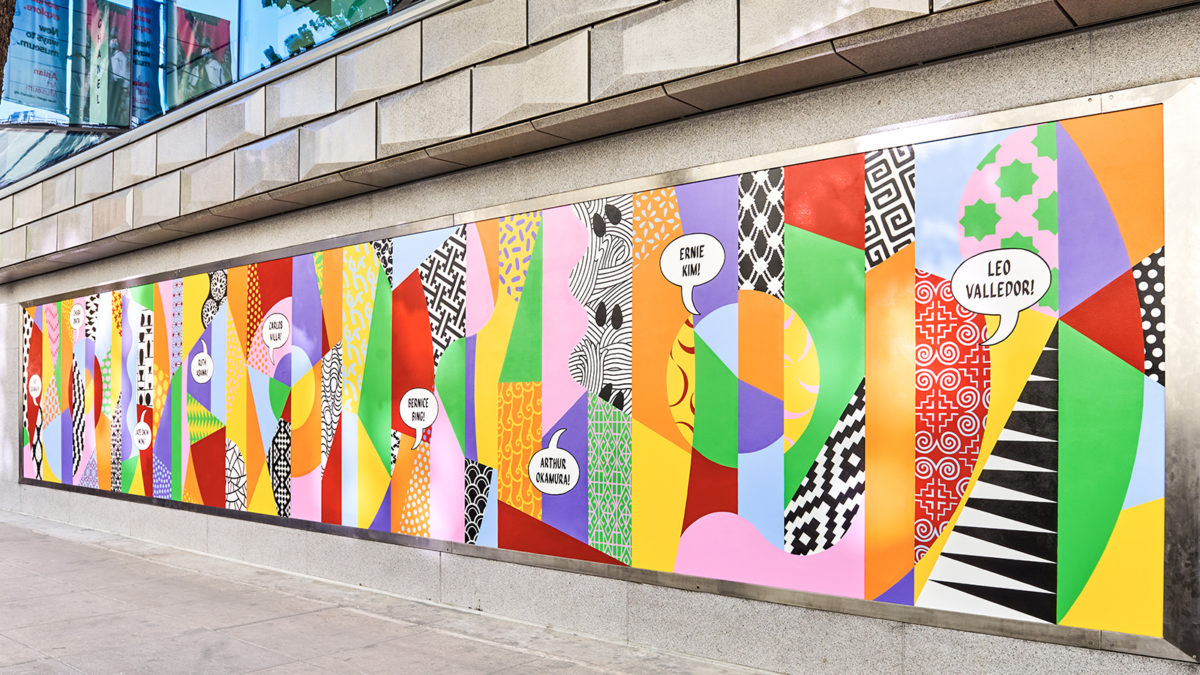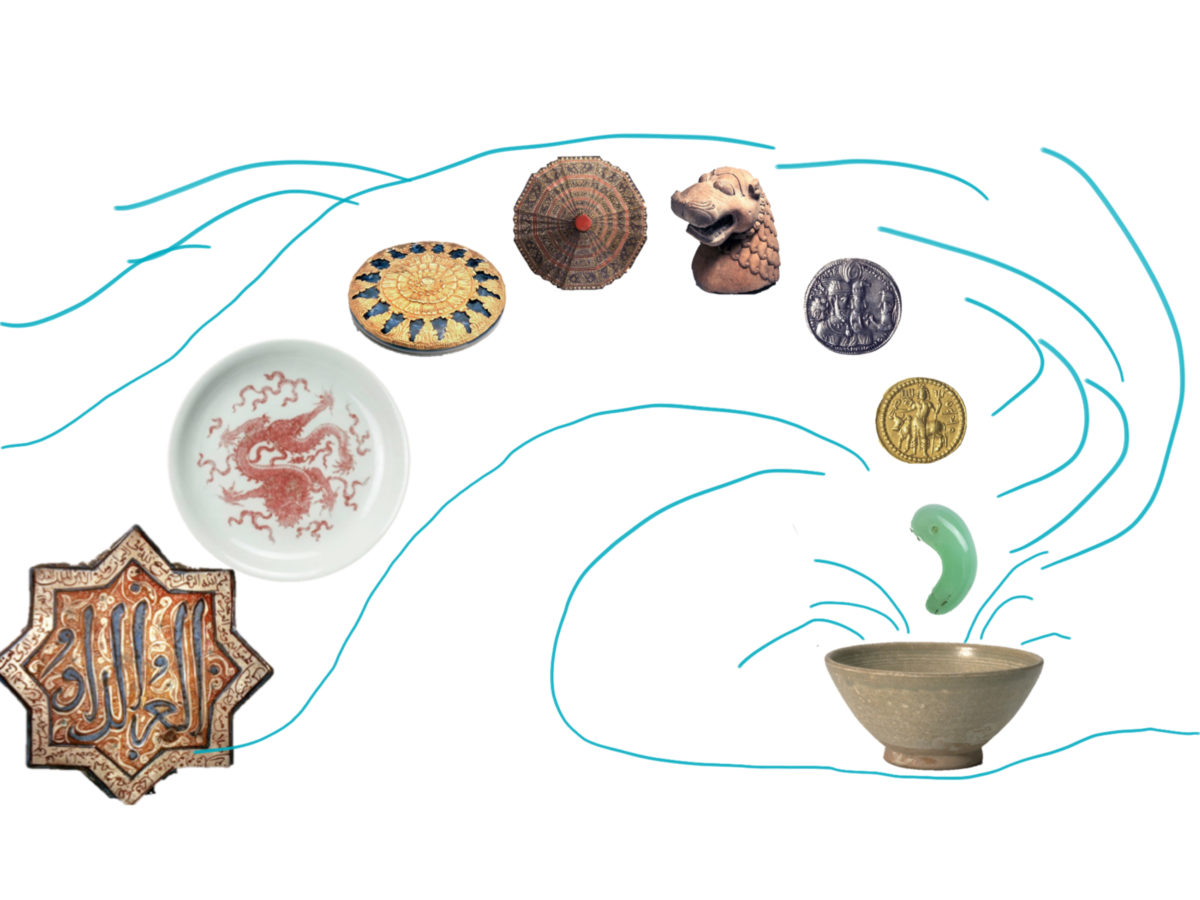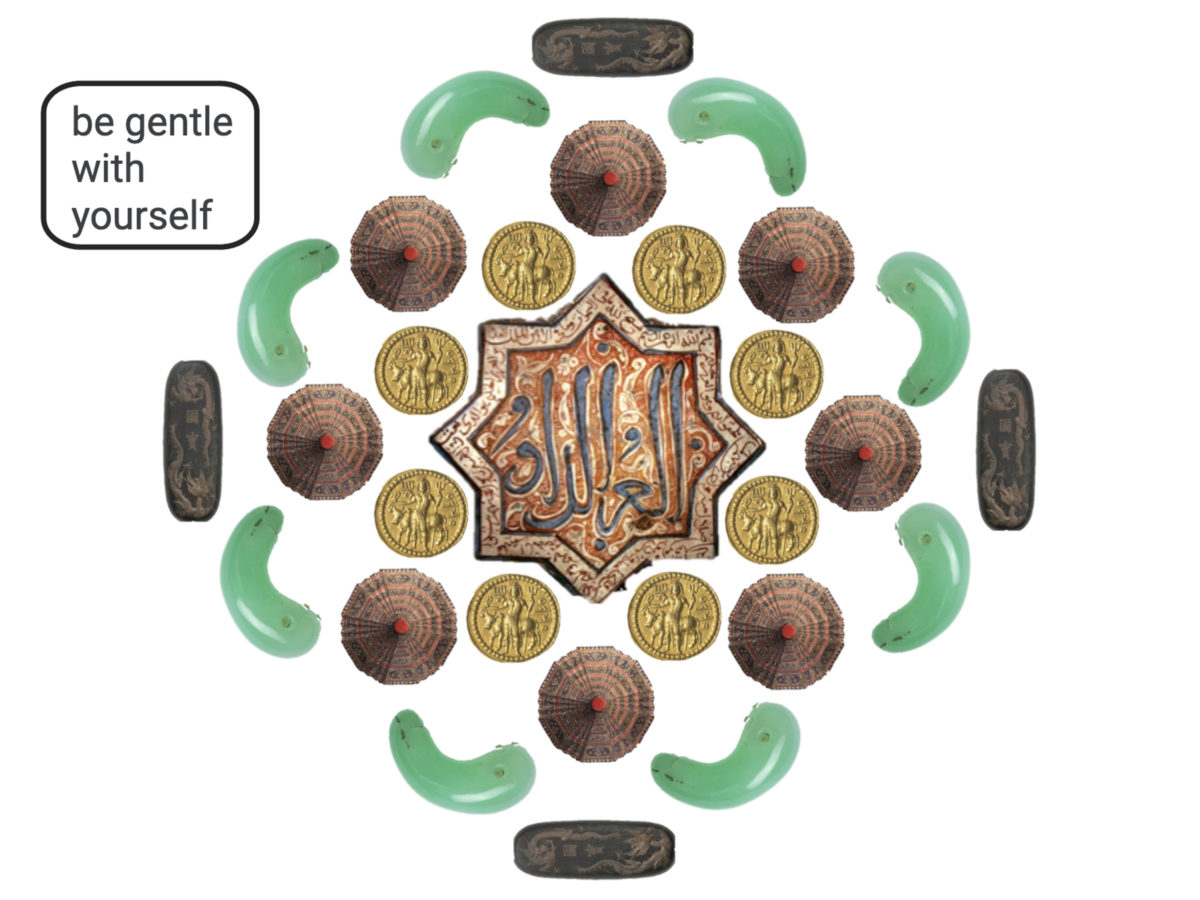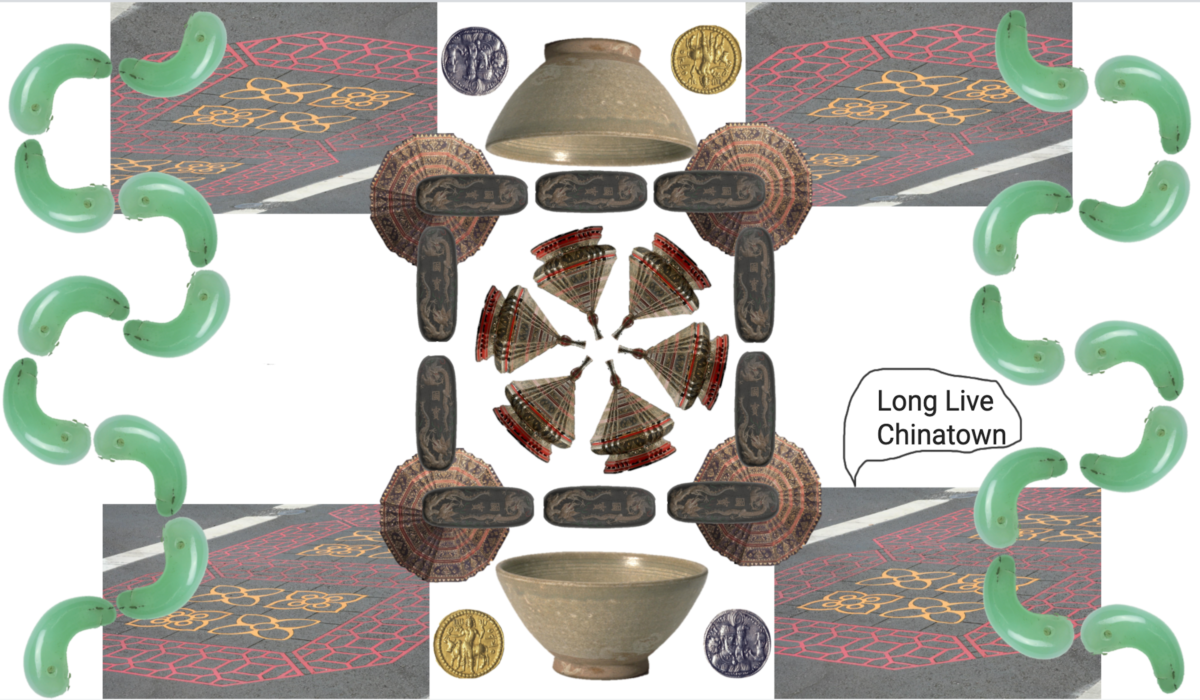Activity
Pattern Recognition: Activity Packet

Click though the gallery to see digital collage examples
“Pattern Recognition incorporates cheerful bold colors, graphic patterns, and comic-strip speech bubbles as a way of paying tribute to the intertwined creative legacies of Asia and Asian America. The patterns and motifs reference various craft and design traditions from the Asian Art Museum collection as well as from neighboring Asian communities. As someone who lives a short walk away from the museum, I wanted the mural to feel both local and global. My hope is that this mural adds vibrance to the Civic Center area, as well as the neighboring Tenderloin and SoMa districts, by showcasing cultures and histories that reflect and empower the immigrant communities that live here.” — Jenifer K Wofford
In this packet, you will engage with Wofford’s mural, learn about different Asian cultures and identities, and celebrate Asian American artists from the San Francisco Bay Area. With what you’ve learned and researched, you will then create your own patterns in a digital collage art project.
Discussion Questions
- What does the title Pattern Recognition mean to you? What kind of patterns can you find in Wofford’s mural? What kind of recognition is the mural trying to promote?
- What is the effect of having the artists’ names in the speech bubbles? What types of art are speech bubbles normally used in? What is the mural “saying”?
- What is the effect of placing patterns created by the named artists among patterns drawn from traditional Asian art?
- Wofford says, “Nine [names] is too few” for a mural celebrating Asian American artists, and “there honestly should be way more names than that.” Which other Asian American artists would you like to see added to the mural? Why?
- If you were to create your own Pattern Recognition mural, what patterns and names would you include? From what cultures? Why?
Activities
- Explore the Google Arts & Culture online exhibit on Pattern Recognition. Watch Jenifer Wofford’s interview to learn more about the inspirations behind Pattern Recognition. Why is it important that this mural is on an outer wall of the museum? What is the mural’s message to the community around the museum?
- Learn more about the artists named on Wofford’s mural by exploring these teacher packets. Are there patterns to their experiences as Asian Americans? At the same time, what’s unique about each of their stories?
- Using Wofford’s legend for Pattern Recognition (under “Downloads” on the right sidebar), research one of the traditional Asian designs in the mural and its cultural significance. Share what you learn with a friend who researched a different pattern. Compare notes—what do your chosen patterns have in common? What’s different?
- Writing prompt: If the exclamations in the mural’s speech bubbles were replaced by questions, what might those questions be?
- Create your own collage using speech bubbles and patterns drawn from objects in the Asian Art Museum collection referenced in Pattern Recognition (see below). After finishing your collage, reflect: What is your collage “saying” to the viewer? (Duration: 30 minutes or more )








